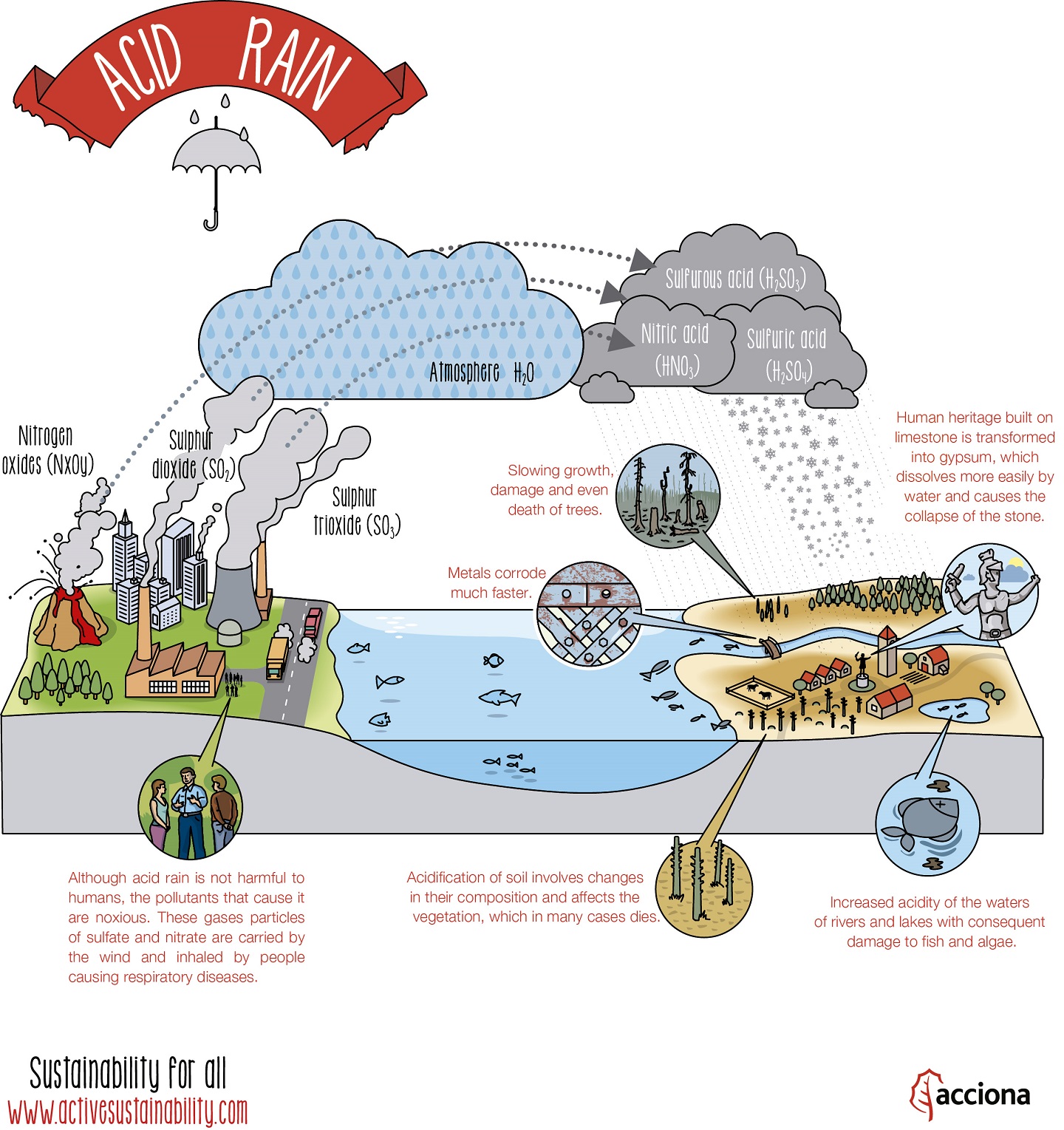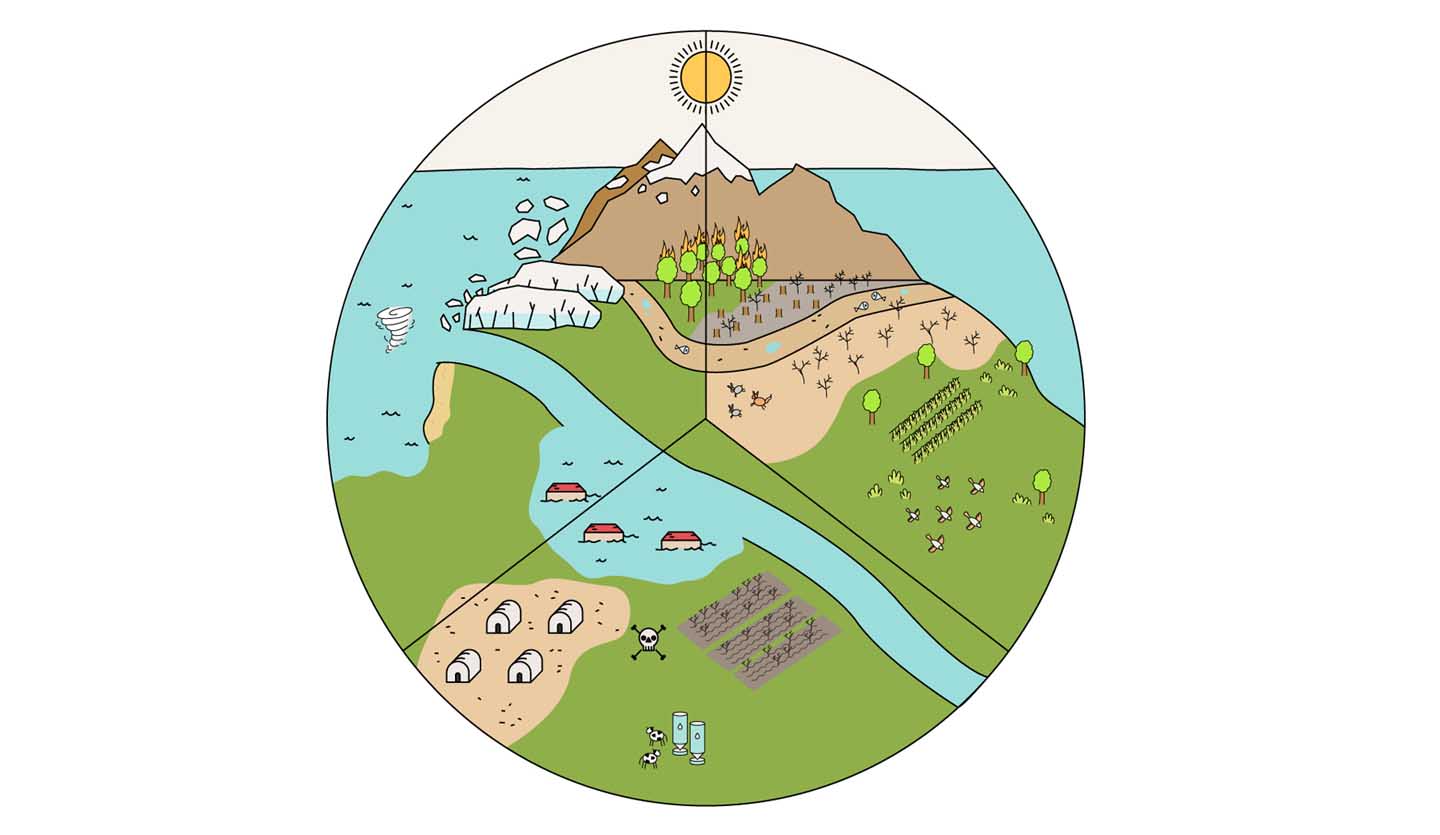What is acid rain and how is it formed?
Acid rain occurs when certain emissions come into contact with the water of the atmosphere. Learn everything about acid rain in this article and infographic.
How is acid rain formed?
Acid rain is one of the consequences of air pollution. It occurs when emissions from factories, cars or heating boilers contact with the water in the atmosphere. These emissions contain nitrogen oxides, sulfur dioxide and sulfur trioxide, which when mixed with water become sulfurous acid, nitric acid and sulfuric acid. This process also occurs naturally through volcanic eruptions.
Acid rain effects
The resulting acids are precipitated to earth as rain or snow with very negative consequences: on the one hand the damage to nature in the form of acidification of soils, lakes and seas with consequent damage to terrestrial and marine flora and fauna. On the other hand, acid rain also causes corrosion of metallic elements -buildings, bridges, towers and other structures- and the destruction of human heritage made of limestone -buildings and historic structures, statues, sculptures... -
Is acid rain harmful to humans?
Acid rain itself is not harmful to humans, ie, the skin contact with contaminated water or snow does not pose a health risk. However, the gases that cause this rain (nitrogen oxides, sulfur dioxide and sulfur trioxide), are harmful. These gases contain particles of sulfate and nitrate and are carried by the wind and inhaled by people causing respiratory diseases.
How to stop acid rain?
The only way to stop acid rain is to reduce emissions that cause it. This involves betting on renewable energy sources and reducing the use of fossil fuels in the industrial and automotive sector and in the daily life of every citizen.
The following infographic might help better understand what acid rain is and what are its effects:








